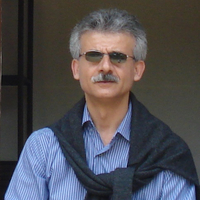Papers by Philippe Druart
Zeitschrift für Pflanzenphysiologie, Dec 1, 1982
Shoots raised in vitro from apple Jonagold meristem tips were rooted on IBA (rooting initiative p... more Shoots raised in vitro from apple Jonagold meristem tips were rooted on IBA (rooting initiative phase) after elongation in the presence of GA3 (rooting inductive phase). Continuous darkness used instead of a 16-8 h day-night cycle during both phases favored increase and decrease of peroxidase activity, successively, and induced higher percentages of rooted plandets. The darkinduced changes in endogenous phenolic levels varied inversely with the changes in peroxidase activity.

Acta horticulturae, Aug 1, 2009
Inter-generic breeding between Fragaria × ananassa and Rubus in order to develop new Phytophthora... more Inter-generic breeding between Fragaria × ananassa and Rubus in order to develop new Phytophthora resistance into Fragaria has been investigated. The study describes the use of the electro-fusion technique allowing to obtain Fragaria × ananassa var. 'Elsanta' (+) Rubus heterocaryons and microcalli. Protoplasts isolation was carried out following the Durieu and Ochatt (2000) procedure. Protoplasts of each species were identified using fluorochromes. Fluorescein diacetate (FDA) and rhodamine B isothiocyanate (RBi) were respectively used for Rubus and Fragaria protoplasts. Under UV light, protoplasts with FDA staining gave a yellow-green fluorescence allowing evaluation of density and viability evaluation while those with RBi gave a red fluorescence. Density and viability were determined for each species. Electro-fusion was achieved using 2 ml cuvettes of an Electro cell Manipulator ECM ® 630 (BTX, California) with electrodes 1 mm apart. Three pulses at 250, 500, 750 or 1000 V•cm -1 were delivered at 10 s intervals (capacitor of 75 µF and variable resistance of 201, 281 or 1540 Ω). The efficiency of protoplast fusion was evaluated under UV light, as the fluorochromes are linked to different parental protoplasts, whereby heterokaryons can be observed and counted through their double fluorescence, green and red. Protoplasts were cultured at 105 cm -3 on a KM medium (Kao and Michayluk, 1975). After one week a dilution was performed with the same medium and, as soon as the majority of cells had regenerated their wall, weekly dilutions (adding weekly 1 ml media per ml of initial protoplast culture) were carried out. Large numbers of heterokaryons have been produced using different Rubus genotypes and different electrical parameters for fusion. Both divisions of heterokaryons and the formation of heterokaryon-derived microcalli were observed.
Acta horticulturae, Sep 1, 1987
Acta horticulturae, Dec 1, 2004
Springer eBooks, 1986
The elimination of virus diseases by meristem-tip culture is still one of the most interesting ap... more The elimination of virus diseases by meristem-tip culture is still one of the most interesting applications of tissue culture. Since the first success on virus-infected dahlias (Morel and Martin 1952), a lot of other species have been cleaned of their virus diseases (Quak 1977). However, this technique has not yet been generalized for trees.
Forestry sciences, 2003
Apple (Malus x domesticaBork) is probably the most widely grown fruit crop in the world, being cu... more Apple (Malus x domesticaBork) is probably the most widely grown fruit crop in the world, being cultivated throughout the northern and the southern temperate zones. Selections from the wild have been made for several thousands years, since the period when apples were cultivated by the Greeks and Romans.

Acta horticulturae, May 1, 2002
An efficient adventitious shoot regeneration protocol from leaf explants of the Bulgarian local c... more An efficient adventitious shoot regeneration protocol from leaf explants of the Bulgarian local cultivar 'Kyustendilska sinya' and the Belgian - 'Altesse simple' (Quetsche) clone was developed. Sufficient regeneration frequency was achieved on MS basal medium supplemented with 1.65 mg/l Thidiazuron (TDZ) and 0.5 mg/l Indole-3-butyric acid (IBA), 2% sorbitol and 1% sucrose under red fluorescent light. Putative transgenic plants were obtained from wounded leaves co-cultivated with EHA 105 and LBA4404 Agrobacterium tumefaciens strains, containing a pBin19 plasmid derivative carrying neomycin phosphotransferase (NPT II) and green fluorescent protein (GFP) genes under the control of CaMV 35S promoter. Only three putative transgenic plans were selected on a medium with 25 and 50 mg/L kanamycin. The integration of the NPT II marker gene was detected by PCR in leaves of the regenerated plants.
Biotechnology in agriculture and forestry, 1992
The plum tree belongs to the family Rosaceae; subfamily Prunaceae, genus Prunus, subgenus Prunoph... more The plum tree belongs to the family Rosaceae; subfamily Prunaceae, genus Prunus, subgenus Prunophora. The most important species are classified according to their habitat in the following three groups: 1. Euro-Asiatic species: P. domestica L., P. cerasifera Ehrh. 2. American species: P. americana Marsh., P. mexicana Wats. 3. Oriental species: P. salicina Lindl., P. simonii Carr. Major among the species of cultural importance are P. domestica and P. salicina.
Springer eBooks, 1999
The genus Prunus (Rosaceae) includes all the’ stone fruits’, i.e., P. persica, P. domestica, P. d... more The genus Prunus (Rosaceae) includes all the’ stone fruits’, i.e., P. persica, P. domestica, P. dulcis, P. cerasus, P. avium and several other species and interspecific hybrids used as rootstocks, e.g. P. cerasifera, P. spinosa, P. insititia, P. mariana for plum trees, P. mahaleb, P. dawyckensis, P. canescens, P. incisa × serrula, P. avium × P. pseudocerasus, P. mahaleb × P. avium, for cherry trees.
Acta horticulturae, Jul 1, 1990
Biotechnology & Biotechnological Equipment, 1997
ABSTRACTSeveral factors were tested for their influence on the yield and viability of mesophyll p... more ABSTRACTSeveral factors were tested for their influence on the yield and viability of mesophyll protoplasts isolated from P. cerasus L. cv. Montmorency. As optimal conditions were determinated the development of good plants on medium “e” for 10 days. Suitable age of leaves for protoplasts isolations is 10 days cultures. The best viability (95%) of mesophyll protoplasts were obtained using enzyme solution I—Cellulose Onozuca RS—1%; Rhozyme HP—150–1%; Pectolyase Y—23–0.1%. We observed increasing of protoplasts yield and viability after auxin pre-treatment of the leaves. Cultural media based on Murashige and Skoog's (MS) salts supplemented with NAA 0.05 mg/l, BAP -0.5 mg/1 and Z—1 mg/l promoted cell wall regeneration (7th day), the first mitotic division (10–14 days), cell colonies (35 days) and formation the microcalli (65–70 days).

Acta horticulturae, Oct 1, 2012
Fruit trees belong to the recalcitrant species to regeneration. Neo-formed shoots, roots or somat... more Fruit trees belong to the recalcitrant species to regeneration. Neo-formed shoots, roots or somatic embryos appear after single culture sequences corresponding to successive phases of induction, initiation and finally elongation (roots), development (buds), or expression (somatic embryos) according to the organogenic process engaged. Each of the successive steps required specific culture conditions to control according to the genotypes. A comparison has been made between apple, plum, cherry and relevant trees triggering the commonalities between processes of regeneration. Explants must have reached a sufficient physiological maturity before wounding and submitting them to treatments that will activate the perception capacity of the cells to exogenous and single growth regulator at the highest frequency. A gradient of response to the organogenic process highlights more numerous targeted cells in the proximal areas of sub-apical leaves and main roots. The other areas of the explants are involved with optimizing the regeneration conditions. Several cell layers are targeted simultaneously to organize and form new buds and roots on the expression medium. Adventitious budding and somatic embryogenesis can be sustained along subcultures on the expression medium. Through adapted hormonal balance, it is possible to target the layer origin for regenerating buds and the organ for somatic embryos. According to the different levels in root cells competence, various organogenic programs simultaneously occur. This comparison shows a similar approach of any regeneration process for any genotype of fruit tree, somatic embryogenesis staying genetic dependent.
Acta horticulturae, Nov 1, 1996
Acta horticulturae, Sep 1, 1988
Acta horticulturae, Jul 1, 1990
Acta horticulturae, Jul 1, 1998
Acta horticulturae, Oct 1, 2012











Uploads
Papers by Philippe Druart